Personal Clean Air Stories
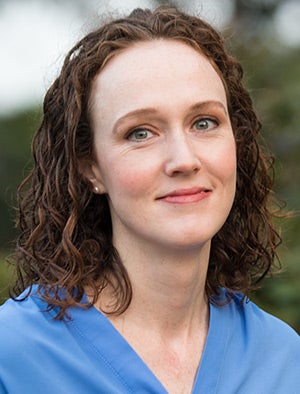 Aileen Nowlan
Aileen NowlanAileen Nowlan leads the initiative to develop and scale air pollution monitoring, mapping, and analysis. Among other things, she leads EDF's work to make risks from truck-attracting facilities like warehouses local, personal, and avoidable.
Tell us about your role at EDF
My job is all about translating EDF’s cutting-edge science and data into meaningful policy action that can deliver better air quality in the United States. I get to work with our scientists to understand what they see as the most important opportunities to drive health improvements, to learn from them and then to bring those opportunities to our state and federal political affairs colleagues. I collaborate with people who have relationships on the ground to understand what the political opportunities could be and then bring those back to the scientists to help scope the next round of cutting-edge work.
What are the challenges of translating science into policy or for general audiences?
In my training as a lawyer, one of the things that I had to practice was presenting in front of a jury, where you summarize incredibly complicated facts in a short time. Everything you say must be in 90 second increments. That's where my role comes in, making sure regular people understand what we're saying and that it matters to them.
How did you become interested in air pollution?
For me it arose from the idea that there's no disposable places and no disposable people. My mother used to say, when you throw something ‘out’, there's no out. There's no out in terms of air or water or physical things. The realization that everything that we do sticks around really sparked my interest in environmental work, including air quality.
One of your biggest projects has been the Making the Invisible Visible report on the impact of warehouses and freight trucks in the United States. How did that come about?
I'm really proud of this little report. It started out in the deep dark beginning of the pandemic when I basically told my team to clear all our meetings and focus for a whole week on an in-depth project. Our goal was to see if we could find a new way to help localize the risks from freight trucks. We quickly found sources on demographics and health burdens, but spent the whole week looking for data sources about warehouses with no luck. On the last day, we identified a database that became the basis for the warehouse mapping.
After that, we spent over a year creating maps of proximity of people to large warehouses for community groups and asking them, Is this helpful? How would you use it? They kept responding that the maps seemed to verify their lived experience. This wasn’t a case of EDF discovering health inequities—it was all about confirming what the communities had been saying for years. Communities eventually asked us to issue a report that they could cite in their advocacy.
What are you working on now?
We have a huge opportunity with funding from the Inflation Reduction Act (IRA) to direct funds and policy that target health and air hotspots. I’ve been working with state and local governments across the United States to help ensure they have the information and strategies in place to take full advantage of these funds and to ensure equity is centered.
What gives you hope?
I get hope when I get to talk directly with people who are trying to make a difference in the place that they live. I was in a meeting in Baltimore about heat and climate resilience and someone at the meeting said, “who had the bedroom on the third floor when they were growing up?” and half the room put up their hand because you know you grow up and your parents stick you in the attic. Then they asked “Who was either too hot or too cold? Let's talk about cool roofs.” That conversation, it's going to be great. I find that when you're talking about solutions for where people live, solutions that make their lives easier and safer and more joyful, that is a better conversation.
On a more macro level, I think coming back to the idea of no disposable places, no disposable people. I do see people in the environmental movement and the government starting to take that more seriously and there's definitely more work to be done but we are engaging seriously on it, and that also gives me hope.
 Swagata Dey
Swagata DeySwagata Dey leads an EDF-supported project based in Delhi, India, called Local Air Management Plan (LAMP). LAMP helps eight cities across India cut air pollution by improving hyperlocal monitoring, designing micro-action plans and implementing interventions.
How did you begin working on air quality?
I am a chemist, and my work has always leaned toward environmental science. After moving back to India from the United States in 2018, I got a job at the Center for Science and Environment, one of the oldest think tanks in India and a champion of air quality. In my role as Deputy Program Manager, I developed clean air action plans for four states in India covering about 18 cities. It was during that time that I started to notice a gap between science, policy and implementation.
How does your scientific background impact your work?
Graduate school taught me about the importance of scientific rigor in a controlled setting. But the moment you move to policy, you need scale. You cannot have a small piece of equipment tested in a lab, or a small experiment, and then go out to the field. So now, whenever there is a discussion on policy, or implementation, I can point out what can be scaled up and what cannot.
Even scientists have to be able to look at the broader impact and communicate it clearly to be successful. I most enjoy bridging the gap, and I can do so, because of my scientific training and my experience writing policy.
Why is air pollution so important to focus on in India?
Air pollution touches everything. It affects industries, people, especially children, sports, tourism and the even airline industry, because of visibility.
We can solve this--India successfully landed on the moon. It is a very solvable problem.
What does LAMP do in each city?
Most cities don’t have a firm understanding of their emissions, where they come from and where they are most concentrated. So, we usually start by conducting an emissions inventory using a network of sensors. Then, we partner with state and local governments to develop a solutions plan. We have a core methodology for monitoring, but we're also looking at new tools like satellite data.
Our original partner is the National Environmental Engineering Research Institute (NEERI). As LAMP has grown, we’ve engaged new partners like The Energy and Resources Institute (TERI). With their help, we’ve grown to an eight-city program.
What do you think is the unique value that LAMP brings to air quality work in India?
LAMP does not use a one-size-fits all approach. I try to go to each site to get a bird's eye view of the local issues, considering questions like:
- What is the traffic count and volume like?
- What kinds of fuel are people using in local markets?
- How many active construction sites are in the area?
- Is garbage burning prevalent?
We go in as tourists with the eyes of a scientist. I don’t go around collecting data by myself, because that intimidates people. But I do try and get a holistic big picture through observation.
 Ritesh Gautam
Ritesh GautamRitesh Gautam is a lead senior scientist at EDF. His fields of study include: Satellite Remote Sensing of air pollution, Earth Observations from Space and Quantifying the magnitude and extent of short-lived climate pollutants.
How did you become interested in air quality/remote sensing?
I got into the field 20 years ago in graduate school. Satellite imagery and the global scale of satellite data has always fascinated me. The unique vantage point of satellites and their ability to provide data anywhere on the Earth represent, to me, an intriguing opportunity and endless possibilities to explore anything happening on the Earth’s surface.
What led you to conduct your recent research on extreme smog in India? What was the spark that led to the study? What do you hope the results can accomplish?
I grew up in northern India, where more than 600 million people live in densely-populated areas. The winter months are pretty intense in terms of the levels of air pollution. Along with pollution, dense fog is very common, which results in extreme smog conditions. Often times you can’t even see your neighbor’s house or the car in front of you while driving. The problem has gotten only worse.
When I came to the United States 20 years ago for graduate school, I was lucky to get into a remote sensing program. I started to learn about satellite imagery and came across this very prominent layer of pollution and fog hanging over northern India on a daily basis, especially in winter months. Since then, I have been analyzing data collected from satellite and ground measurements over this region, which has enabled me to better understand the processes that have led to an intensification of smog. I also conducted field experiments to measure pollution and their climate effects when I used to work at NASA.
There is a tremendous amount of awareness about air pollution in India now compared to a couple decades ago in part because of the wealth of data and insights that has been produced by the science community. There have been some meaningful initiatives to reduce pollution, but stronger measures are needed to see that the pollution is on a downward trend.
Can you tell us how your work on remote methane sensing relates to air quality?
It focuses on the emissions from the oil and gas sector globally. Oil and gas facilities tend to emit other types of air pollutants in addition to methane. For example, flaring sites emit nitrogen dioxide pollution, soot particles and so on. Similarly, other types of oil and gas facilities also co-emit other gases and volatile organic compounds (VOCs) that can be harmful to human health.
Using different wavelength bands in satellite data can tell us the distinct signatures of different types of pollution gases. We find several interesting patterns of co-pollution from the global oil and gas industry that help explain the sources and processes of emissions. Understanding and mapping both methane emissions and air quality effects from oil and gas activity can help us target high-emitting sources from a policy and advocacy perspective.
How can more data on air quality improve people’s lives?
Over the last decade or so, we have seen a growing body of data that points to the magnitude and extent of air pollution and how it harms our health. It seems to me this decade will shed new light into how to more effectively cut air pollution, using guidance from cutting edge analytics and tools.
What are you working on right now that you’re excited about?
My main projects are MethaneSAT and MethaneAIR. MethaneAIR is an airborne version of the satellite and is already collecting data. I am excited about the unique datasets that these two missions will provide in terms of total regional methane emissions, spatial distribution across broad areas and the different sources of emissions. MethaneSAT has been designed to provide all three different and actionable sources of information via a single satellite mission.
As Steve Jobs said when introducing iPhone - “Are you getting it?.....These are not three separate devices. This is one device.” The same applies to MethaneSAT in that it offers seamless access to comprehensive emissions information with a single end-to-end system.
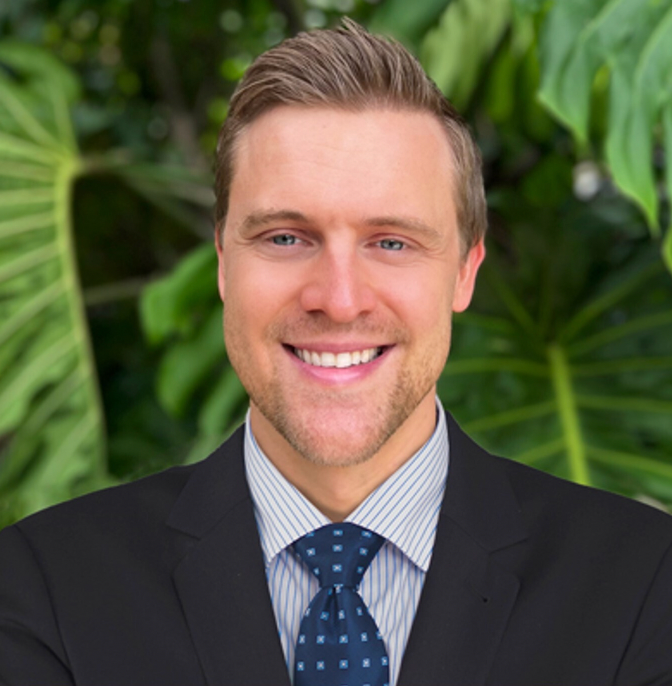 Derek Schwabe
Derek SchwabeDerek Schwabe recently joined EDF’s Global Clean Air team as Communications Manager. He focuses on elevating EDF’s global research and policy work on air quality and telling written and visual stories that raise awareness and inspire action.
What is your background?
I started my career in policy analysis and advocacy around hunger, nutrition, and food system issues. However, I learned early on that even the most vital research may not reach many people or trigger meaningful action without a robust, creative communications plan to support it. That’s why I became more interested in figuring out how to make urgent social and environmental justice issues easier to understand and act on.
How did you get interested in air pollution?
I have become increasingly alarmed by the rapid deterioration of the resources on which we all depend—including the air we breathe—and how that decline is already reversing the progress we’ve made on many of the other issues I care about: poverty, inequality, democracy, public health, food security…go down the list. I became convinced that preserving our natural resources is the top priority issue that I wanted to work on, as a prerequisite to progress in so many other areas. That’s why I chose to focus my work on digital storytelling around climate and natural resource management issues.
What do you want to accomplish at EDF?
I see all my communications goals as directly tied to our shared long-term goals: to improve air quality and cut climate emissions. I want to tell more engaging stories that reach more people, heighten awareness, and motivate bolder policy action. How we do that will differ depending on each audience and the circumstances, but key goals for me include producing engaging written and visual content, continuing to grow our online audience and media coverage, and strengthening our data and interactive storytelling (among much more!).
What are you working on right now that you’re excited about?
One of the projects that I’ve been most excited to work on in my first month is partnering with EDF’s amazing video and graphics team to put together a snappy explainer video that makes the case for why we need to tackle air quality and climate change together as two dimensions of the same problem. It will be part of the new EDF Explains series on YouTube. If you haven’t checked that series out yet, I highly recommend it!
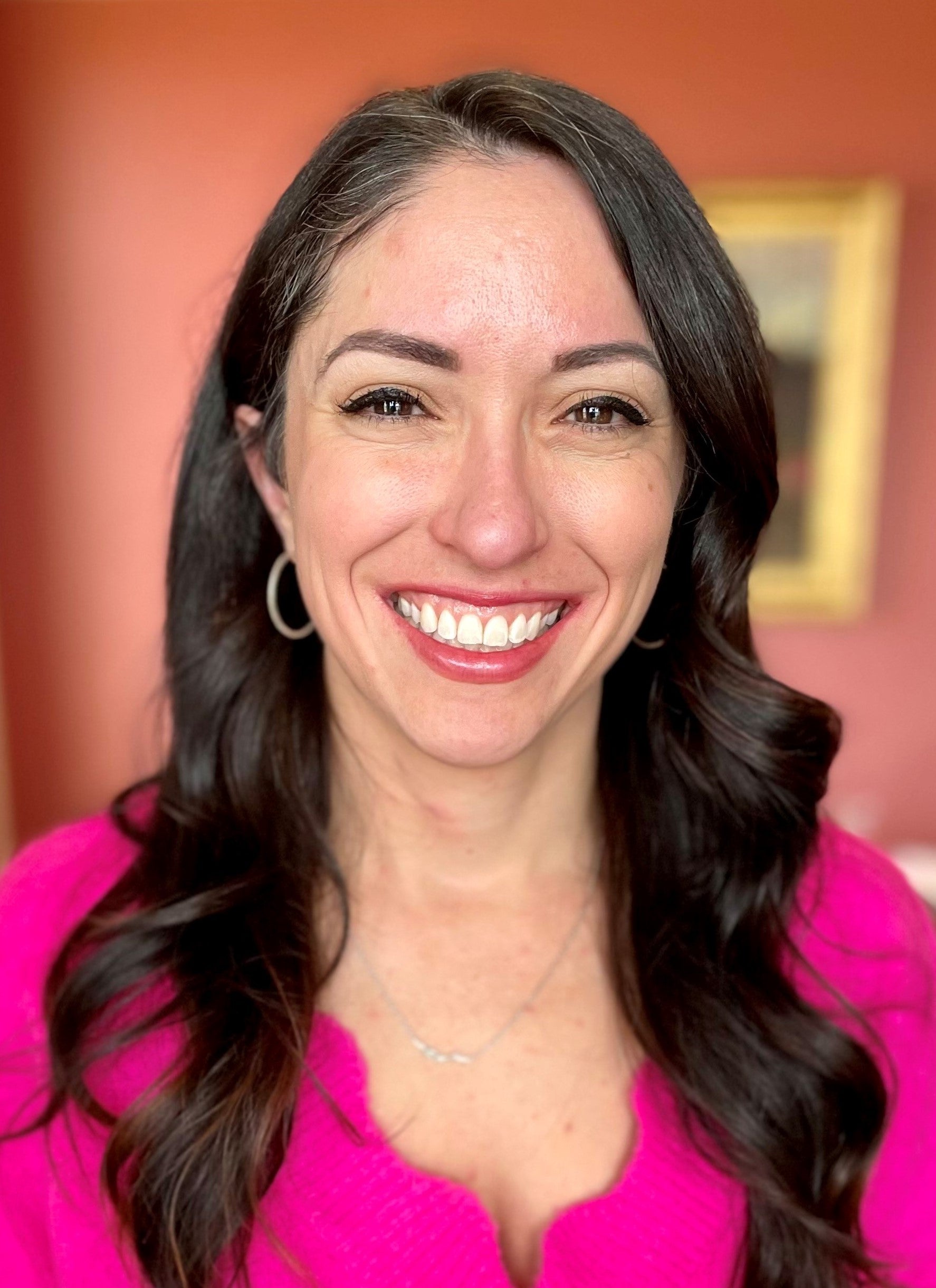 Veronica Southerland
Veronica SoutherlandVeronica Southerland is an EDF scientist working on advancing our understanding of the health impacts of air pollution.
What do you do at EDF?
I work as a scientist in EDF’s Global Clean Air program. I work on estimating the health burden of air pollution.
What are you working on right now that you’re excited about?
I’m excited to be currently working on estimating the health benefits of truck electrification initiatives at the city-level.
You’re working on elevating the connections between methane and health. Talk about the importance of bringing people together to develop recommendations for action to reduce methane emissions and improve public health.
It’s important to bring together a diverse set of stakeholders to work on this issue, because reducing methane emissions can have tremendous co-benefits for health due to decreasing methane co-pollutants from oil and gas, agriculture and waste sectors that are harmful to health as well as precursors to criteria air pollutants.
Why is this work important to you personally?
Having grown up in a coastal town in Florida, I saw firsthand the impacts of climate change on my community. I’m excited to be able to work in an area that addresses both climate change and alleviating the health burdens associated with climate change and air pollution.
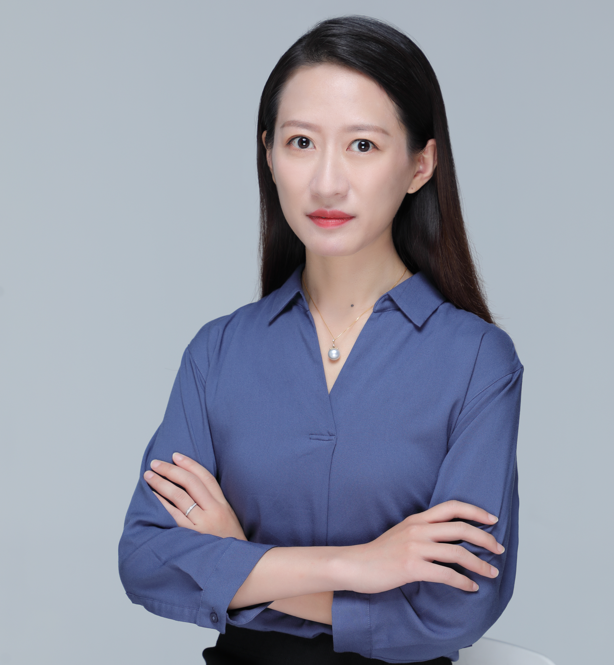 Xinhao Huang
Xinhao HuangXinhao Huang is a senior manager for clean air and environmental policy at EDF. She works on EDF’s air quality-related project development and implementation in China.
What is your role at EDF?
I am a manager for clean air and environmental policy based in EDF’s Beijing, China office. I am responsible for air quality-related project development and implementation in China, and I also conduct policy recommendation studies on air and climate policy developments, maintain relationships with key partners, and develop policy briefings to facilitate internal and external communication.
How did you get interested in air quality?
I was born and raised in a heavy-industry town in the far southwest part of China, where the economy was mainly centered on the development of abundant natural resources. It has one of our country’s largest iron and steel companies. I can still remember the gray and foggy sky as well as the unpleasant smell of the soot back when I was a child. I wanted to understand the causes of this heavy pollution and what we can do to make a difference.
Tell us about the on-the-ground pilot projects you’re working on in Chinese cities.
At EDF China, we are working with regulatory, academic and nonprofit stakeholders to design and pilot an integrated environmental governance system with insights from hyperlocal monitoring incorporated to support Chinese cities in adopting more targeted pollution control measures that deliver both clean air and climate benefits and public health.
From 2019-2021, we launched a Pilot Project on Data-driven AQ Policy Enforcement in Cangzhou City, where we deployed 50 taxi-based sensors building upon the existing hundreds of regulatory stations and stationary sensors.
We increased the previous spatial resolution of 3 kilometer x 3 kilometer to a much finer 100 meter x 100 meter resolution and established a hotspot report and on-site inspection mechanism to identify pollution events and potential sources.
The Cangzhou pilot demonstrated how cities can use hyperlocal air pollution monitoring data to locate hotspots accurately and improve enforcement efficiency. Now we are trying to use hyperlocal datasets to improve other policy instruments to support urban planning and decision-making processes in other Chinese cities.
How can actionable data on air quality drive solutions that reduce air pollution and protect our health?
I think the key is to establish a pipeline of translating data into policy. First, we need to use robust scientific models and analytic tools to interpret the huge amount of air quality data into information on pollution sources. EDF’s Air Tracker is a great example.
We also need an in-depth understanding of the economic and social development of local cities and communities, their air quality improvement goals, policies, and priorities. With this information we may design targeted control measures and incorporate tailored solutions into the local policy framework.
Local governments are usually more willing to take action when equipped with more data-driven information on air pollution exposure and its impact on health. Cities will be more capable of implementing solutions that are in line with local policy priorities. Last but not least, we need to build collaboration through a multi-sector partnership effort to align all the interested parties to make this happen.
 Megha Namdeo
Megha NamdeoMegha Namdeo is a project management advisor, supporting EDF’s work on the Clean Air Catalyst partnership in Indore, India. As the engagement lead, she brings together diverse stakeholders from government, industry and community, building a trusted coalition of partners working together for clean air.
How did you get interested in air quality?
My background is in science and the environment, and as a postgraduate student, I studied the social science aspects of the environmental movement: the importance of building awareness and engagement across sectors to accomplish environmental goals. For nearly 20 years, I have worked with organizations serving women and children in roles in the state of Madhya Pradesh in India: the Environmental Planning & Coordination Organisation, the Council of Science and Technology, the state biodiversity board, and others. Through these roles I became interested in building an understanding of local air quality.
You’re working on engagement and coalition-building for the Clean Air Catalyst project. What role can these local relationships play in advancing clean air policies?
Community engagement and coalition-building plays a critical role in the Clean Air Catalyst partnership. Under India’s National Clean Air Programme (NCAP), non-attainment cities work through a cross-sector task force comprised of a diverse set of city departments (traffic, transport, education, health, urban planning and others). Indore is the nation’s six-time winner in the Swacch Bharat Mission (“Clean India”) for solid waste management, and now the city is focused on reducing air pollution.
We’re working with the local government to bolster the science and data collection around what’s in Indore’s air, and they’ve opened doors for us to collaborate across departments to work collaboratively on clean air solutions. We’ve provided training on clean air and health to Accredited Social Health Activists (ASHAs), who are trusted voices in the community and are educating residents on the importance of reducing air pollution. They had a great presence at our inauguration ceremony for Indore’s new air quality monitoring equipment last month.
Can you share any recent successes for improving air quality in India?
The installation of reference-grade air quality monitoring stations in Indore was a huge milestone for the Catalyst partnership. After the project concludes, we’re planning to hand over the equipment to the local government so they can continue to monitor local air pollution levels and use this data to inform clean air solutions. Urban local bodies are also now involved in NCAP pollution reduction targets, which has driven increased attention to improving air quality.
Why is this work important to you personally?
Improving air quality is not an easy task. Science plays an important role, but it’s deep, meaningful engagement with local and regional stakeholders–from government, private industry and the community–that drives the work forward. It’s critical to build a shared understanding and awareness of air pollution sources and the importance of air quality if we want to work toward clean air in the long term. Personally, I am enthusiastic to be part of this movement, because everyone has the right to breathe clean air for their health.
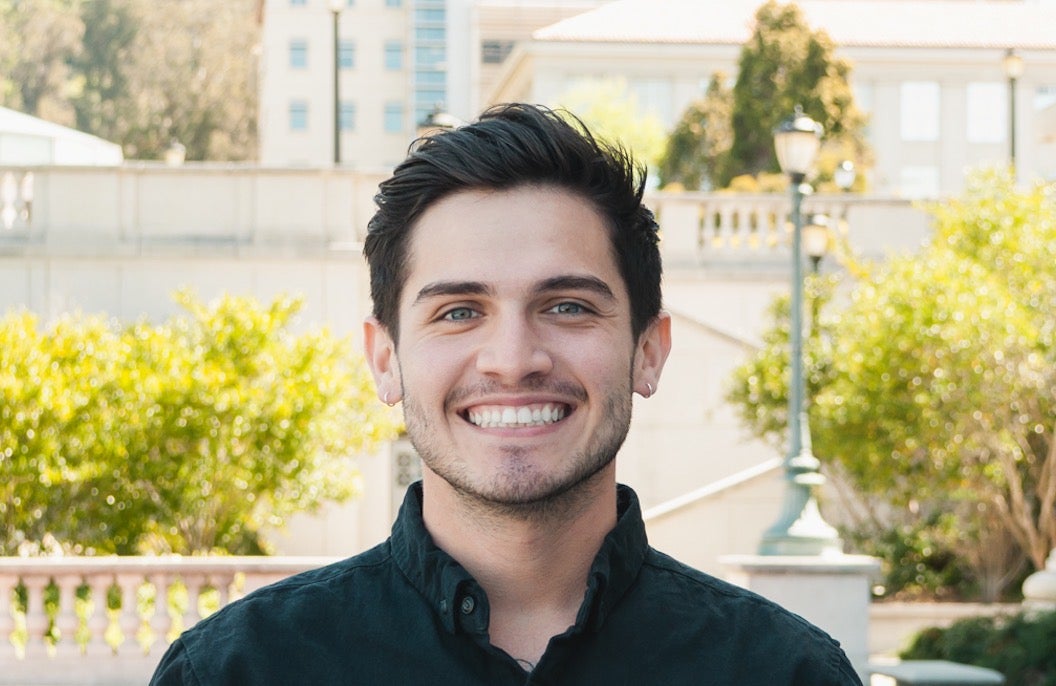 Alex Franco
Alex FrancoAlex Franco is a Senior Research Analyst with Environmental Defense Fund. He has a background in public health and supports EDF projects across the organization, including research at the intersection of air quality and health.
What do you do at EDF?
I am a Senior Research Analyst in the Office of the Chief Scientist. I conduct analyses and manage projects on a wide variety of environmental topics that cut across EDF’s program areas.
How did you get interested in air quality research?
I first learned about air pollution’s disproportionate impacts in the Los Angeles region in college, where I volunteered with local Better Breathers Clubs in predominantly Hispanic and Latino neighborhoods. I went on to study public health in graduate school where I continued to research racial and ethnic disparities in exposure to harmful pollutants.
You helped develop EDF’s Air Tracker tool, which allows users to learn more about what’s in their air. What’s the latest on how people are using the tool, and what’s next?
We are meeting with community groups to better understand their questions and needs for Air Tracker. The tool is now live in five cities, and we are working towards expanding globally this year. Also, a new heatmap feature is coming soon. This will allow users to see the most likely sources of pollution over many dates and times, in addition to the single snapshots currently available.
What’s a current project you’re working on that you’re excited about?
I’m starting on a new project focused on health and environmental justice benefits of reducing emissions from medium- and heavy-duty vehicles. I look forward to learning more about how novel approaches to quantify health impacts can contribute to policy change.
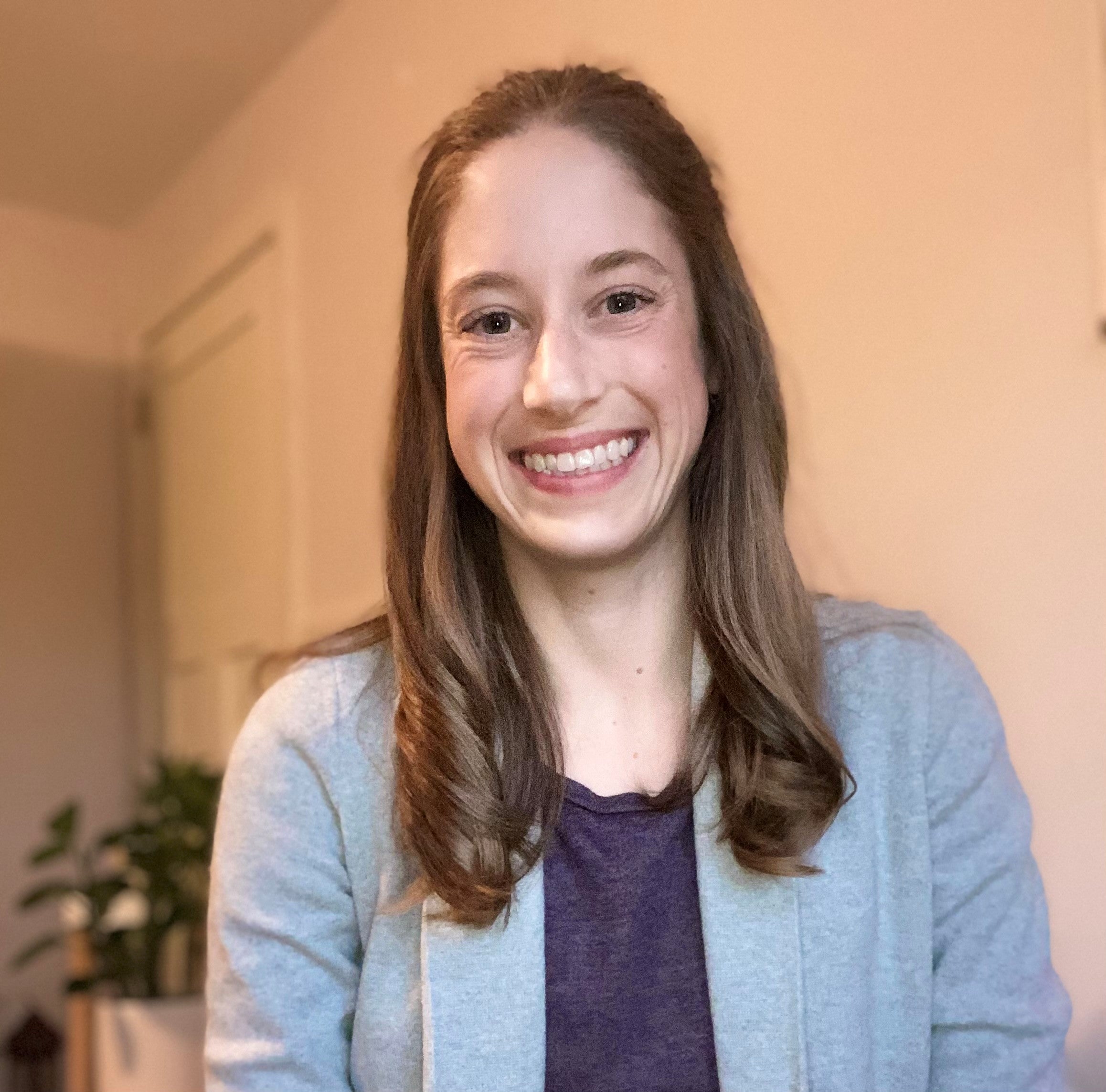 Libby Mohr
Libby MohrLibby Mohr is a Senior Data Analyst working on EDF’s Petrochemicals Initiative. She’s helping to translate data into action for communities in the shadow of the petrochemical industry in Texas and Louisiana.
What do you do at EDF?
I am a Senior Data Analyst working on EDF’s Petrochemicals Initiative. I use diverse data sources to inform strategies for improving the health and well-being of communities living near petrochemical facilities.
How did you get interested in the health and environmental impacts of air pollution?
I studied environmental science and chemical engineering in college, which piqued my interest in air pollution. The health and environmental impacts of air pollution became more personal when I lived in the western US and experienced several noteworthy wildfire seasons. Prior to joining EDF, I worked in sustainable food production and water quality. Transitioning into the realm of air quality felt natural and made it clear that no matter the medium - food, water, or air – I feel passionate working at the intersection of environmental and human health.
What’s a current project you’re working on that you’re excited about?
I’m currently working on evaluating the utility of formaldehyde satellite data for understanding sources and health impacts of formaldehyde and other volatile organic compounds. This excites me because most areas in the United States have little to no ground monitoring of formaldehyde, and satellite data could be tremendously helpful with filling in these gaps.
How can more and better data on what’s in our air make a difference for people’s health?
I love the way data can empower people to take action! Air quality data can help individuals make day-to-day decisions, support community activism, and inform state and federal policy. All of these applications have the potential to make a difference for people’s health, but their success relies on plentiful and accurate data.
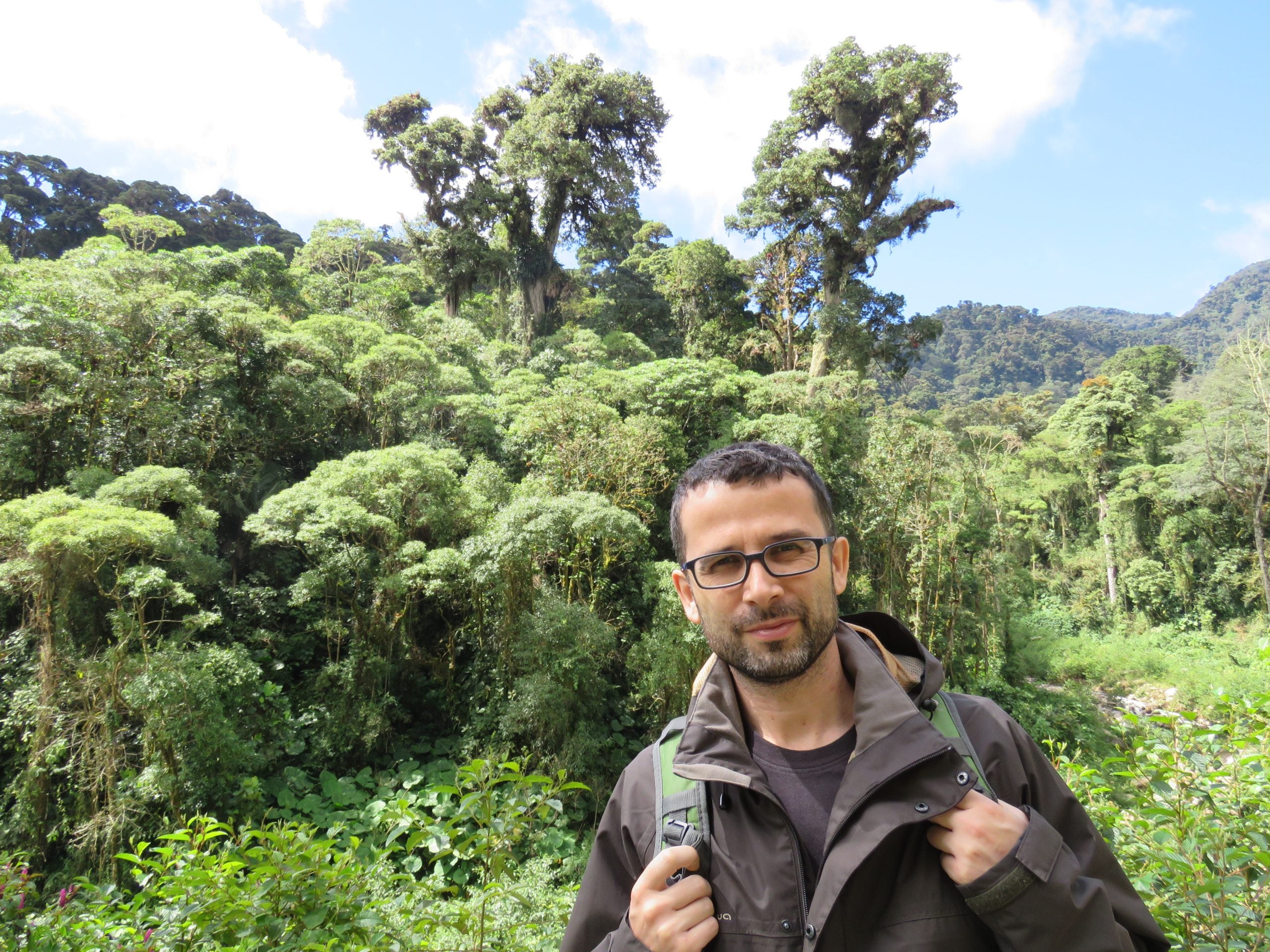 Jordi Pon
Jordi PonJordi Pon is the Regional Coordinator of the Chemicals and Pollution Action Programme for the United Nations Environment Programme’s Latin America office. His current work on UNEP and EDF’s clean air partnership recently brought together air quality managers and experts from throughout Latin America and the Caribbean to share experiences incorporating the latest air quality technologies and strategies into practice.
What is your role at UNEP?
I am the Regional Coordinator of the Chemicals and Pollution Action Programme at the United Nations Environment Programme’s Latin America and the Caribbean Office, based in Panama.
How did you get interested in clean air solutions?
Many years ago I contributed to research comparing the cost of adopting measures to reduce atmospheric pollution (e.g. industrial emission limits, fuel standards, etc.) with the cost of inaction (e.g. health and productivity costs). The balance was overwhelmingly evident in favor of taking action. I found it hard to understand the slow pace policy implementation even if the monetary numbers were so clear.
Tell us about the importance of regional collaboration in improving air quality.
The transboundary nature of atmospheric pollution requires the collaboration between countries and regions in order to identify and address emission sources and model transport mechanisms. Also, while the exact sources and nature of pollution may differ between countries, there are similar challenges that are frequently addressed by many nations and cities. Solutions and lessons can be exchanged through regional coordination and cooperation, and we can learn from each other.
Why is this work important to you personally?
I have always been interested in international environmental policy, and air quality is one of the areas where international and regional cooperation is of utmost importance–and where a lot is yet to be done.
 Lavanya Padhi
Lavanya PadhiLavanya Padhi is a project advisor for EDF’s clean air work in India. Her background is in biomedical and environmental engineering, and her work provides data support to regulators for air quality management.
How did you get interested in air quality?
Prior to EDF, I worked on waste management issues and providing best practice recommendations for healthcare, plastics and e-waste. Throughout my career, I have supported organizations through capacity-building to improve public health.
What projects are you working on?
I contributed to IndAIR - the Indian Air Quality Studies Interactive Repository - which is a collection of air quality work from Indian scientists and experts dating back to 1950. By making air quality data open and accessible, we can work toward building a well-established body of air quality research in India.
I also work on energy modeling in India. We’re currently developing an energy modeling framework that is open and accessible. This will build our understanding of clean energy transition possibilities and challenges for India. One thing we’re looking at closely is co-benefits of emissions reductions.
Why is this work important to you personally?
I believe in evidence-based solutions to environmental issues, and the air quality projects I’m working on allow me to explore multidisciplinary approaches to problem-solving.
 Mindi DePaola
Mindi DePaolaMindi DePaola is a Program Manager with EDF’s Office of the Chief Scientist. Her work focuses on air pollution, environmental justice and equity, and she’s working on air quality solutions that include just and equitable outcomes for communities.
How did you become interested in air pollution?
I first became interested in air pollution while at the Scientific and Technical Advisory Panel within the United Nations Environment Programme right out of college. I worked on a black carbon project with an amazing mentor, Virginia Gorsevski, and that project really stuck in my head. I went back to graduate school to study public health and was on a research team working in the Andes Mountains on air pollution and health within rural populations at high altitude, often low-income.
What do you want to accomplish with your work?
With any of the work that I’m doing here at EDF, my ultimate goal is to support and empower those folks who are the most affected by climate change and air pollution. If we can make any headway in doing that, I will feel that I am having an impact.
What’s a current EDF air quality-related project you’re working on that you’re excited about?
I am excited about a project that we are just getting started on, focusing on particularly hard-to-reach U.S. immigrant groups and their perceptions of air pollution in their community. It’s always been fascinating learning about perceptions of climate advocacy and what that may look like for different populations.
 Jennifer Hadayia
Jennifer HadayiaJennifer Hadayia is the Executive Director of Air Alliance Houston, a nonprofit advocacy organization working to reduce the public health impacts from air pollution and advance environmental justice.
How did you first get interested in the public health impacts of air pollution?
I have worked in public health for close to 25 years, and most of that time has been at state and local health departments where I oversaw prevention-focused programs on infectious diseases, chronic disease, and even maternal and child health. I spent a lot of time reading and researching and trying to understand how to help people prevent poor health outcomes.
Even 25 years later, I still remember the day when my eyes were first opened. I was reading a report from the Institute for Health Metrics and Evaluation, which explained that the number of heart attacks in a community could be predicted by the level of PM2.5 in the air. The impact of air quality on public health was mind-blowing! After years of trying to change individual behavior, it was clear that improving environmental conditions could have a far greater impact on people’s health at a population level.
Tell us about Air Alliance Houston’s work.
Air Alliance Houston was formed in the late 1980s as a merger between two groups of residents and parents concerned about smog. We’ve undergone some key evolutions and expansions in the last 30 years to embrace a population health perspective and a focus on environmental justice. Today our mission is to reduce the public health impact of air pollution through research, education, and advocacy.
We run several campaigns on specific air pollution issues and solutions such as problematic air permits, transportation planning that de-prioritizes Single Occupancy Vehicles (SOVs), connecting air pollution to climate action and community-level air monitoring. But it’s our approach to the work that I think makes us unique:
- We inform the narrative about public health and air pollution through an environmental justice lens by uplifting community voices and experiences through participatory research and planning.
- We work to build community knowledge and power through the diffusion of accurate information about air pollution, its sources, and how environmental decisions are made in Texas.
- We create pathways for impacted and overburdened residents to engage in environmental decision-making and become advocates for their health.
Is there an upcoming project or initiative that Air Alliance Houston is working on that you’re especially excited about?
Yes! We’re planning to unveil two new initiatives this year that build on our past advocacy successes, so we can scale our impact even further.
The first is called AirMail, which is an enterprise mapping system that scrubs air permit applications to the Texas Commission on Environmental Quality (TCEQ) for “bad actors” in Houston’s environmental justice neighborhoods. It then maps the facilities to a public web-based platform and notifies impacted residents via postcard. The map and the postcards explain the air quality impact of the permit (for example, a refinery expansion or a new residential concrete batch plant) and provide actions that residents can take, including connecting to our second new initiative, the Environmental Justice Leadership Lab (EJLL).
The EJLL is a consolidation of the various training and technical assistance options we provide to community members, so they have the tools and knowledge that they need to speak out against a problematic permit or engage in other environmental decision-making.
Both of these initiatives have been in the “proof-of-concept” phase, requiring extensive manual time and effort. With the automation of AirMail and the consolidation of our training and technical assistance resources under the EJLL-branded umbrella, we will be able to oppose even more polluters and to empower even more residents.
Why is clean air important to you personally?
I was born and raised in Houston. My father and grandfather were dock workers at the Port of Houston, surrounded every day by oil refineries, chemical facilities, tankers and trucks. Growing up, I remember that my father never left the house for work without two things: his cowboy boots and his asthma inhaler. He had debilitating asthma his entire life, and he died young, as did my grandfather, after many years of cancer and heart failure. I don’t think either of them or our family ever made the connection between where they worked and were exposed to poor air quality every day and their poor health and early death.
Knowing what I do now about air quality and health, I have little doubt there was a connection. I’m deeply proud that I now have the opportunity to work to improve health conditions for Ship Channel families like my own, and to do so with the talented and dedicated staff of clean air advocates at AAH.
 Maria Harris
Maria HarrisMaria Harris is an environmental epidemiologist at EDF. Her work focuses on protecting children’s health from the impacts of air pollution.
What do you do at EDF?
I am an environmental epidemiologist in the Office of the Chief Scientist, focused on researching air pollution exposure and health impacts as part of the Global Clean Air initiative.
How did you get interested in the health impacts of air pollution?
As a teenager, I had an internship collecting soil samples from urban gardens in Boston, Massachusetts to check for the presence of lead and share resources on how to reduce potential exposure to lead. That work was my first introduction to how environmental pollution can harm children’s development. Studying environmental science and environmental heath in college and grad school, I learned that air pollution exposure is a risk factor for many diseases and represents one of the largest environmental threats to health and well-being globally. In my own research, I saw how air pollution could harm infants and impact children’s brain development. Those experiences, along with becoming a parent myself, all inspired me to want to join EDF and work as part of a team focused on cleaning up air and protecting children’s health.
What are you working on right now?
One of my current focuses is the impacts of air pollution on childhood asthma. According to recent research, nearly 2 million children per year worldwide develop asthma due to air pollution exposure – that’s about 16% of new asthma cases in children, on average. Eliminating this harmful pollution is crucial to protecting children’s health. I’m working with colleagues at EDF to make sure policymakers understand how pollution is impacting childhood asthma in cities around the world, including my hometown of Boston, and why taking action to curb pollution is so urgent.
Why is EDF’s work on clean air important to you personally?
Living through several increasingly severe wildfire seasons in the San Francisco Bay Area, I saw how dramatically poor air quality impacted the health and quality of life of my family, especially my young kids. The wildfires also brought me face to face with the connections between global warming and air pollution and the urgent need to take action on both crises by curbing our use of fossil fuels. I am inspired to be able to work alongside EDF colleagues and partner organizations focused on demanding actions and solutions that will protect the health and future of my kids and kids around the world.
 Daniel Peters
Daniel PetersDaniel Peters is a Senior Air Quality Data Analyst at EDF. His work involves making sense of air quality data and supporting the technical aspects of EDF’s air pollution projects.
How did you get interested in air quality science?
When I was an undergraduate student at Northwestern University, I joined the Climate Change Research Group, led by Dr. Daniel Horton. I learned that many sources of pollution that contribute to climate change also affect the air quality and health of nearby communities. My thesis research grew out of this interest. Using data from air quality model simulations developed by Jordan Schnell, I analyzed whether vehicle electrification, which had clear climate change benefits, would also improve health outcomes by reducing air pollution.
What do you do at EDF?
I’m a Senior Air Quality Data Analyst at EDF, and my job is generally to make sense of all sorts of data related to air pollution. I get to work with lots of different types of data, ranging from measurements of weather conditions and air pollution levels to data about sources of air pollution including traffic congestion or industrial facilities. As part of EDF’s Office of the Chief Scientist, I often support the scientific and technical aspects of our air pollution projects. For example, in my work as part of the Breathe London pilot project, I was responsible for calibrating our network of air pollution sensors and evaluating the data quality.
What are you working on right now?
As part of the Clean Air Catalyst project, a program launched by the US Agency for International Development, I’m leading the development of our data management system and working with teams in Jakarta, Indonesia and Indore, India as they collect and analyze new air pollution data. The other main project I’m working on is focused on reducing toxic air pollution from petrochemical facilities in the Gulf Coast region.
How can more data on air quality improve people’s lives?
Having more air quality data can help in several ways. One way is through advocacy – having the right data can empower communities to advocate for change, such as making the case for additional government monitoring or enforcement. From a regulatory perspective, increasing the number of air quality monitors can help decrease blind spots in the network where high pollution might go undetected. Also, having sufficient air quality data can be key to estimating the health impacts caused by pollution and understanding which communities are most affected, so that mitigation policies can be designed to protect those most at risk.
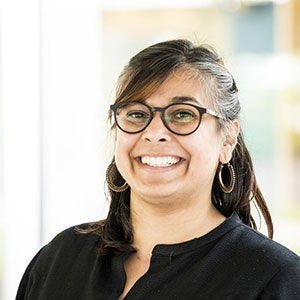 Ananya Roy
Ananya RoyAnanya Roy is a Senior Health Scientist at EDF. Her work focuses on the health effects of ambient air pollution within neighborhoods.
How did you get interested in the intersection between air pollution and human health?
I grew up in India and was always passionate about the environment and human health. I came to Harvard for graduate studies in environmental health. Having experienced the deterioration of air quality in New Delhi and learning about ongoing studies and debates on adverse health effects triggered my interest in air pollution and health.
How did you end up on the Global Clean Air team?
After my doctorate, I worked with Prof. Jim Zhang at Rutgers for several years exploring air pollution’s effects on lung development in children and heart disease in adults. Soon it wasn’t enough to document the problem, I wanted to enable solutions. EDF was starting to use sensors and Google Street View cars to measure and map air quality. They had just initiated a study to understand the environmental justice and community health implications of the dramatic street by street differences in air pollution being made visible by sensors and mobile monitoring. They needed an epidemiologist to lead that work, and I jumped at the chance.
What are you working on now?
I’m working to translate data to action in cities in America and in India. At the federal level, my focus is on building the scientific underpinnings for more health protective national air quality standards and policies limiting emissions from trucks, buses, and cars. We’ve found that traffic-related air pollution is a substantial proportion of new childhood asthma cases. Asthma can have a profound impact on a child’s life. If we can prevent a child from developing asthma, that’s meaningful.
What gives you hope?
I’m encouraged by a new study showing that the numbers of children developing asthma went down when air quality improved. Over the last 20 years we’ve seen dramatic change—we’ve gone from questioning whether renewable energy was possible to seeing enormous solar farms in India and the retirement of several coal-fired power plants in America. Electric vehicles were a pipe dream, and now they’re available and feasible. These actions reduce air pollution, and that’s a public health opportunity to prevent childhood asthma, premature death, ER visits and hospitalizations in the communities that are most impacted.
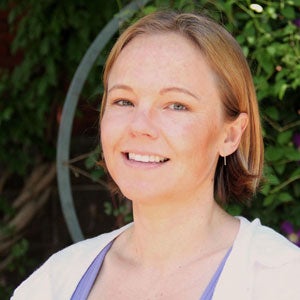 Tammy Thompson
Tammy ThompsonTammy Thompson is a Senior Air Quality Scientist at EDF who focuses on identifying the sources producing specific pollutants and the paths those pollutants take when they travel through the air.
How did you get interested in air quality science?
I really enjoyed studying studied chemical engineering as an undergraduate but wanted to focus my career on environmental advocacy. Working on air quality modeling with Prof. David Allen at the University of Texas at Austin for my PhD was a great fit. He helped launch my career, and in the process, I became passionate about air quality.
What do you find interesting about studying air quality?
People don’t always see the direct impact of pollution. Because you don’t see it, air pollution can be easy to ignore, but it’s really important.
What exactly do you study?
I use computer models to evaluate how different pollution reduction strategies impact air quality, and how our current understanding of the science impacts how “sure” we are that a particular approach will work. This helps us design policies that have a greater impact. We also use these models to evaluate the cost of policies and human health benefits, which is important for policymakers and their constituents.
What do you do at EDF?
I work on hyperlocal source apportionment, or the identification of air pollution sources at the neighborhood level. Our Google Street View project in Oakland demonstrated that pollution concentrations can be up to 8 times higher on one end of the block than the other. To act on that knowledge, we need tools to help us understand what’s causing that variability.
I’m digging into tools and ongoing research to find methods that work at the hyperlocal level. We’re identifying ways to make them scaleable, so different cities across the country and around the world can use them to gain a better understanding of how pollution sources are impacting people nearby.
What inspires you?
The people I get to work with—both at EDF and our partners. People are thinking outside the box and are not just doing things because that’s the way they’ve always bene done, which has the potential to lead to some exciting breakthroughs. I am also passionate about my outdoor time, biking, running, skiing. I want everyone to be able to go outside and not have to worry that it’s bad for their health.
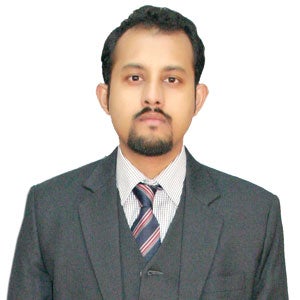 Kaushik Hazarika
Kaushik HazarikaKaushik Raj Hazarika is an advisor for EDF’s air quality work in India and a Project Manager for Clean Air Catalyst in Indore. Clean Air Catalyst is a flagship program launched by the U.S. Agency for International Development and a global consortium of organizations led by World Resources Institute and Environmental Defense Fund.
With a population of 3.4 million, Indore is the commercial hub and most populous city in the state. The city is not meeting the national government’s ambient air quality standards. Reducing air pollution to the recommended levels could save an average of 4.4 years of life per person, while slowing climate change and addressing social inequities.
Kaushik and Clean Air Catalyst team members are working with local stakeholders and key government organizations like the Indore Municipal Corporation and the Madhya Pradesh Pollution Control Board to tackle the root causes of the city’s pollution.
Kaushik says, “I find Indore’s achievement of being declared the cleanest city for solid waste in India inspiring. It is a testament to the dedication of the public representatives, government officials and general public, and demonstrates what we all can achieve by well-concerted public action. My hope is that Clean Air Catalyst will spur similar innovation and success, making Indore an air quality role model for other South Asian cities.”
Kaushik has been a climate and environment professional in India for over a decade now, working on different issues related to the broader sustainability agenda including mitigation, adaptation, agriculture, forestry, water, circular economy, e-waste management and now air pollution after joining EDF and leading Clean Air catalyst in India.
Kaushik has found more success driving the climate narrative into public consciousness in his work to achieve better air quality due to the immediate health risks of air pollution. He says, “Addressing these issues with an approach backed by strong scientific research is incredibly timely and relevant, and I am very hopeful about what Clean Air Catalyst can achieve.”
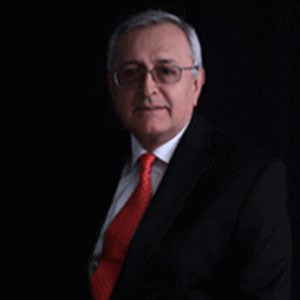 Ernesto Sánchez-Triana
Ernesto Sánchez-TrianaErnesto Sánchez-Triana is the Global Lead for Pollution Management and Circular Economy for the World Bank, where he manages the Program on Pollution Management and Environmental Health and the Program on Pollution Management and Circular Economy.
Ernesto has led the preparation of numerous policy-based programs, investment projects, technical assistance operations, and analytical work in several countries. Before joining the World Bank, he was Professor at the National University of Colombia and Director of Environmental Policy at Colombia’s National Department of Planning. Ernesto also worked for the Inter-American Development Bank. He holds two master of science degrees and a PhD from Stanford University.
Why do you fight for clean air?
My best friend died of lung cancer when he was less than 40 years old. Like me, he had completed graduate studies in environmental engineering. In addition, one of my sons had respiratory problems associated with air pollution that resulted in bronchitis and asthma. This experience, as well as over three decades of working closely with the most vulnerable populations on the planet, have led me to specialize in this area. This is more than a professional obligation for me; it is an unconditional commitment that brings meaning to my life.
Air pollution is one of the biggest environmental threats the world faces and is the world’s leading environmental risk to human health. Exposure to PM2.5 (particles equal to or less than 2.5 micrometers in diameter) pollution, both outdoors and indoors, caused an estimated 6.4 million premature deaths and 21 million years lived with disability in 2019, according to the Global Burden of Disease Report. About 95% of those deaths occurred in low- and middle-income countries.
The World Bank has estimated that the annual health costs of PM2.5 pollution are US$8.1 trillion. Thus, in addition to causing pain and suffering, air pollution causes significant economic costs, equivalent to nearly 6.1% of global gross domestic product. Unless ambitious and concrete interventions are implemented, ambient (outdoor) air pollution is likely to increase its health and social burden in the future as low- and middle-income countries continue to urbanize, industrialize, and experience population growth.
Helping low- and middle-income client countries to address pollution-related challenges is indispensable to the World Bank’s mission of ending extreme poverty and promoting shared prosperity in a sustainable manner. The poor and other vulnerable groups, including children, the elderly, and women, are primarily affected by air pollution. They are exposed to higher concentrations of PM2.5 for reasons that include worse air quality in their neighborhoods, reliance on solid fuels for cooking and heating, and occupational exposure.
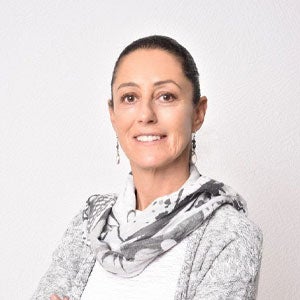 Mayor Claudia Sheinbaum, Mexico City, Mexico
Mayor Claudia Sheinbaum, Mexico City, MexicoDr. Claudia Sheinbaum is Mayor of Mexico City. She graduated in Physics Doctorate of Sciences from the National Autonomous University of Mexico (UNAM); Master and PhD in Energy Engineering at the Faculty of Engineering of UNAM.
She completed a 4-year academic stay for her doctoral research at the Lawrence Berkeley National Laboratory, associated with the University of California at Berkeley.
Sensing technologies are the new eyes and ears for cities to understand air quality, as well as the sources and health risks from pollution. We have a unique opportunity to work with technology innovators, academia, private sector and civil society to connect health and technology to truly clean the air we breathe.
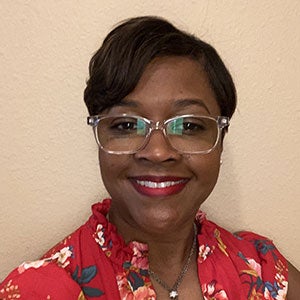 Denae W. King, Houston, Texas
Denae W. King, Houston, TexasDenae W. King is the Research Program Manager in the Mickey Leland Center for Environment, Justice, and Sustainability at the Barbara Jordan-Mickey Leland School of Public Affairs at Texas Southern University in Houston.
Dr. King developed an interest in community-based participatory research (CBPR) as it relates to environmental health and cancer while completing a Kellogg Scholars in Health Disparities postdoctoral fellowship at MD Anderson Cancer Center. She continues to work on environmental health assessment projects designed to address community-identified environmental health concerns in Houston’s underserved environmental justice communities.
She received her Ph.D. in environmental science/toxicology from the University of Texas Health Science Center – Houston, School of Public Health in 2001.
Why do you fight for clean air?
Clean air should be a human right. I fight for clean air to help people of color and communities that are more likely to be located along the fencelines of harmful sources of pollution. I spent my formative years in communities bombarded by businesses and facilities that impacted air quality. There were car-crushing facilities, landfills, and major freeways in close proximity to our homes. It is important to work to ensure that families and children don’t continue to face poor air quality concerns and the resulting poor health outcomes.
Why is EDF’s work on clean air important to you personally?
In the Houston metropolitan area, we don’t have zoning, so we are faced with ongoing air quality concerns. EDF’s work on clean air enhances awareness and advocacy in environmental justice communities. Recent projects focused on community air monitoring enable residents, as well as public health and elected officials, to begin to understand and address ongoing and emerging air quality issues. Education has been valuable for increasing awareness related to air quality and clean air efforts.
I am hopeful this new Global Clean Air initiative succeeds because it will equip citizens with the information needed to advocate for healthier and safer environments.
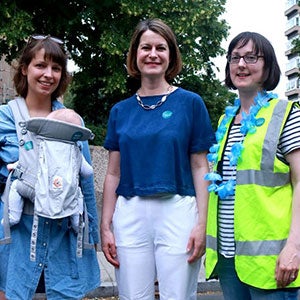 Jemima Hartshorn, London, United Kingdom
Jemima Hartshorn, London, United KingdomJemima Hartshorn (pictured on far left) is co-founder of Mums for Lungs. She was born in London and raised in Hamburg, Germany. She returned to London for an LLM degree in human rights and good governance. She is a human rights lawyer and previously worked as a public prosecutor.
Why do you fight for clean air?
I fight for clean air, because I want all children across the U.K., no matter where they live to grow up healthily and happy. Air pollution has been shown to result in stunted lung growth in children, cause cancer, diabetes, respiratory illnesses and has even been linked to mental health issues in teenagers. That is just wrong. Breathing is most essential for all of us, but in our current set-up with a high reliance on cars and enjoying comforting but often unnecessary woodburning, the air millions of us breathe is not actually safe to breathe.
Why is EDF’s work (inc. Breathe London) on clean air important to you personally?
I think it is really powerful to show how and especially why the air is so polluted. Only when policymakers and many of us understand that driving a road vehicle in London is the single biggest contributor to air that makes us sick, will change be demanded.
I am hopeful this new Global Clean Air initiative succeeds because it is enabling anyone to understand the what and how we all can clean up our shared air.

Photo credit: Mums for Lungs
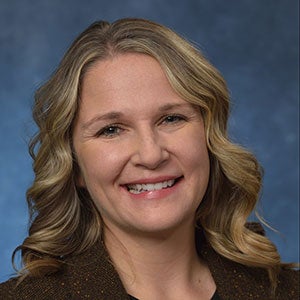 Dr. Melissa Bilec, Pittsburgh, Pennsylvania
Dr. Melissa Bilec, Pittsburgh, PennsylvaniaDr. Bilec’s research is motivated by her strong commitment to develop positive, quantitative, and sustainable solutions for the built environment.
Dr. Melissa Bilec is an associate professor in the Swanson School of Engineering’s Department of Civil and Environmental Engineering; she is the Deputy Director of the Mascaro Center for Sustainable Innovation. She is also the Roberta A. Luxbacher Faculty Fellow, and she serves as the Pitt STRIVE Director of Faculty Community Building and Engagement for Diversity, Equity, and Inclusion.
Dr. Bilec’s research is motivated by her strong commitment to develop positive, quantitative, and sustainable solutions for the built environment. Most recently, she is working to solve the global plastic waste challenge through the advancement and development of design for circular economy.
Why do you fight for clean air? Why do you find this work so critical, especially today?
Growing up in Western Pennsylvania, I lived near one of the most polluted towns. When I was a baby, my mom dressed me in a white outfit, put me in the carriage, and by the time our stroll started, I was covered with soot. This story, along with witnessing the disproportionate impact of poor air quality on community of color, has inspired me to work in this space.
What sort of air pollution work are you focused on?
I primarily see the world and my research from a systems-level view, using the sustainability tool of life cycle assessment to quantify the environmental impacts of the built environment (BE). In working in the BE space, it is important to examine both the external impacts of the ambient air, but also the indoor air impacts as people spend most of their time indoors.
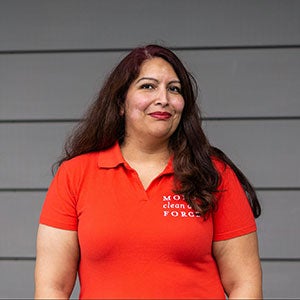 Cinthia Zermeño Moore, Las Vegas, Nevada
Cinthia Zermeño Moore, Las Vegas, NevadaCinthia has been advocating for clean air, clean energy, and water conservation for over 10 years through her work with various organizations in Nevada. She served on the Parks and Recreation Board for the City of North Las Vegas, where she advocated for access to more green spaces.
Cinthia Zermeño Moore is Nevada Field Organizer for Moms Clean Air Force and leads the Ecomadres program, which brings Latina moms together to address issues of clean air, climate, and toxics that affect the health of Latino children and families. She has called the Silver State her home most of her life. Her family moved to Las Vegas from North Hollywood in the early 1990s during the construction boom. She has been advocating for clean air, clean energy, and water conservation for over 10 years through her work with various organizations in Nevada. She served on the Parks and Recreation Board for the City of North Las Vegas, where she advocated for access to more green spaces.
Cinthia is a mother to a toddler boy and a part time realtor in Las Vegas. During her free time, she volunteers as the Chair of the Scholarship Committee for the Nellis Area Spouses’ Club (a Nellis Air Force Base spouses’ organization), which each year is committed to awarding $30,000 in scholarship money to military dependents.
How did you become involved in fighting for clean air?
I do not want other communities to have to go through what folks in my hometown (Jalisco, Mexico) are going through. They had this beautiful river with a waterfall, where families spent a lot of time. Now they have a high rates of cancer, birth defects and breathing issues.
My son motivates me to fight for clean air. He has extreme allergy issues made worse by the poor air quality that we have in Las Vegas. The American Lung Association’s State of the Air Report recently ranked Las Vegas #9 in the entire country for ground level ozone pollution. Last year they ranked us #13. We are not improving, and I do not want us to end up being #1 on that list in the next few years. Our city and our community deserve better.
What motivates you to fight for environmental justice for your community?
Growing up, I often heard my dad talk fondly about his memories of growing up in a town in Jalisco. He talked about swimming and fishing in Rio Santiago. He has so many amazing memories from his childhood, because of this river and the beautiful waterfall. As a kid, I often found myself imagining being by the river and looking at that beautiful waterfall.
However, that moment never came, because that river no longer exists in the way my dad remembers it. In the 1970s, El Salto Jalisco, which is part of the Guadalajara metropolitan area, and the place where both my dad and I were born, became a popular spot for foreign companies. These companies built an industrial park to manufacture their products – tires, electronics, vehicles, and so many other things. The government provided no oversight and no environmental regulations. These companies got rid of their waste by dumping it into the river. As a result, that beautiful river and waterfall where my dad has so many fond memories is now polluted.
My dad was never able to share with his children the experiences he had in that river, because of the environmental harm these companies did. I’m in this fight, because I want to protect the places I love so that I can share them with my young son in a way that my dad was never able to do with his children.
What is your hope for the Global Clean Air Initiative?
I have always felt it was important for us to do as much as we can in order to preserve our planet for future generations. Children have the right to breathe clean air. Together, we can make this a reality.
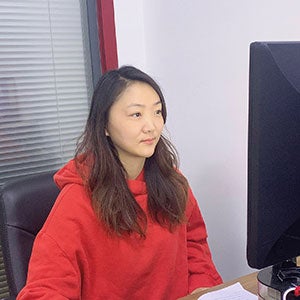 Qin Qin, Cangzhou, China
Qin Qin, Cangzhou, ChinaQin Qin works for Cangzhou City Air Pollution Prevention and Control Work Leading Group Office. She coordinates with various departments including environmental protection, urban management, housing development, and transportation on air pollution control.
Why do you find this work so critical, especially today?
This year is the final year of China’s “Three-year Action Plan for Defending the Blue Sky,” however, air pollution control can’t be finalized.
We must continue to come up with solutions, brainstorm ideas, and deliver good results. At the same time, in response to Chinese President Xi Jinping’s solemn pledge that China aims to have CO2 emissions peak before 2030 and achieve carbon neutrality before 2060, air pollution control should become an effective way to combat climate change, an important measure to promote the continuous improvement of the quality of the ecological environment, and an absolute guarantee for improving people’s health and living standards. As environmentalists, we are obliged to “make the sky bluer, mountains greener, water clearer, and environment more beautiful in China.”
What sort of air pollution work are you focused on?
Since 2017, our department has undertaken the air pollution hotspot grid monitoring pilot (“clairvoyance project”) work carried out in Cangzhou. The project was announced by China’s Ministry of Ecology and Environment (MEE). My department is also responsible for the comprehensive management, coordination, and dispatch of air pollution prevention and control in Cangzhou.
I am involved in the air pollution prevention and control, and responsible for the hotspot grid monitoring pilot, which mainly includes the effective identification of air pollution hotspots and the coordination of various departments (environmental protection, urban management, housing development, transportation, etc.), to deal with urban air pollution hotspots in a timely and effective manner, expecting to reduce the degree of air pollution and improve the quality of the atmospheric environment. I am also responsible for promoting the application of new monitoring technologies and big data in air pollution prevention, urban planning and sustainable development.
I am hopeful this new Global Clean Air initiative succeeds because:
From my perspective, the aim of Global Clean Air initiative is to build a “global village”, in which everyone participates, explore ideas, and works together to achieve the magnificent goal of environmental protection across the globe.
In the era of big data, comprehensive innovations of technologies and systems related to air quality management are able to accurately target the source of pollution, effectively improve regulatory efficiency, implement environmental regulatory responsibilities, and strengthen corporate responsibility. Meanwhile, the initiative is strongly advancing towards precise governance based on risk and assessment, and is gradually integrated into the smart city system. It is believed that the initiative will definitely play a greater role in building a “beautiful city” in the near future.
 Xingyu Qi
Xingyu QiXingyu Qi graduated from the Environmental Engineering Department of Tsinghua University. His studies focus on environmental ecology and environmental management information systems.
His studies focus on environmental ecology and environmental management information systems, including information system design, big-data analysis, data processing and mining, algorithms and modelling for carbon emission, life-cycle assessment research of carbon emission, water and air pollution-related impacts on city ecology. In recent years he has led research on ecology and carbon emission for the Ministry of Ecology & Environment, Shenzhen City government, Xiangtan City government and Beijing Fanghan District government.
How did you become interested in air pollution related work?
In 2013, China issued an Air Pollution Prevention and Control Action Plan. The plan is meant to improve overall air quality across the nation over the course of the next five years, reducing heavy pollution by a large margin and improving air quality in Beijing-Tianjin-Hebei Province, the Yangtze River Delta and the Pearl River Delta.
Scientific and technological development is necessary to achieve these objectives. Key areas of research include source analysis, monitoring of and emergency response to haze and ozone levels, and analysis of formation mechanisms and transfer patterns. The policy created great opportunities for research institutes to utilize science and technology for pollution control. Since 2015, there has been a gradual increase in research related to the causes, monitoring, analysis and movement of atmospheric pollution.
Since 2016, I have participated in science-based pollution control projects at the city and park levels. These projects gather monitoring data through low-cost sensor monitoring deployment. This data is combined with multi-dimensional data sources including pollution sources, economic information, and electricity and meteorology related data. All of this information is then analyzed to see where pollution has come from and where it has gone. This provides scientific support for the formulation of regional pollution control and prevention policies, helping policymakers achieve good results and gain local government recognition.
Through the years, I have developed my data analysis and statistics skills to help create successful, directly applicable research projects. My interest in the field has gotten stronger as I have done more in-depth work.
What motivates your current air pollution monitoring work?
On a large scale, atmospheric environmental protection is fundamental to the health of people, the success of sustained economic development, and the building of a moderately prosperous society in all respects. Through research that helps create a future with cleaner air, I can play my part in the realization of the Chinese Dream of the great rejuvenation of China. Seeing the results of my scientific research applied in real life to solve real issues has been very fulfilling. This has motivated my current air pollution monitoring work.
Please describe your work as director of the Ecology Research Institute of SUSTC Engineering Technology Innovation Centre (Beijing).
The Engineering Technology Innovation Center of Southern University of Science and Technology (SUSTech) is affiliated with the School of Environment of SUSTech and focuses on environmental consulting and research. My work at the Ecology Institute mainly involves regional ecological and environmental protection planning, regional low-carbon green development, multi-dimensional data mining and analysis, and other related research. The Ministry of Ecology and Environment’s goal is the “coordinated control of atmospheric pollution and carbon dioxide.” Therefore, for the Ecology Institute, our work can cover the synergy of these two aspects pretty well.
What are your hopes for the future of mobile monitoring of air pollution?
After five years of effort by governments, enterprises and researchers at all levels, the air quality in China’s 339 prefecture-level cities has been significantly improved. Each city has developed its unique management mechanisms and systems. Through economic development and air quality enhancement, people have become more concerned about the impact of air pollution on health.
It would be great to develop a mobile monitoring device that many people can carry easily. Such devices could collect data on the surrounding air quality to guide people’s travel plans, and, at the same time, upload the data onto cloud servers for modeling and analysis. This can be further used on mobile phone applications to guide the travel plans of even more people, creating a great mobile monitoring application. This would require mobile monitoring equipment to be smaller, more accurate and lower in cost. It may also involve incorporating edge computing into mobile monitoring equipment to reduce both the operating cost of cloud servers and the carbon emissions from cloud services and communications.
What do you see as the role of international collaboration in the fight against air pollution?
Much of my work is at the local level, helping promote clearer air in cities with little impact on the neighboring countries. However, to improve international collaboration on the issue of air pollution control, I think we need to strengthen the exchanges of science and technology, learn from each other’s practical and feasible experiences, and promote more global scale research and innovative technologies. This way, we could avoid detours and speed up progress.
